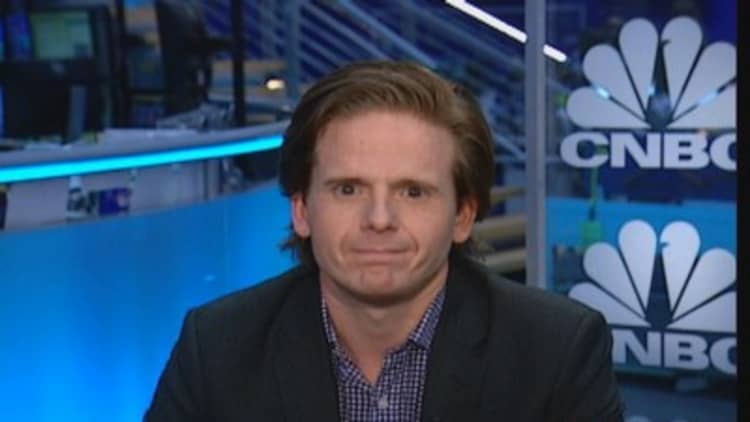
From Sears Holdings to J.C. Penney, the retail sector is crowded with dinosaurs on the verge of extinction. One species that may just be nimble enough to survive: RadioShack.
Shares of the electronics retailer, which originally sold ham radios, have fallen about 97 percent from their peak in 1999 thanks to a confluence of troubles. Just as Amazon has devastated Best Buy with its low prices and convenient delivery, RadioShack has lost heaps of revenue to online rivals.
And while Apple has made products simpler for consumers to use, it reduces the need for the cords and accessories that were historically RadioShack's bailiwick. Even smartphones have taken their toll on the retailer due to their razor-thin margins.
But investors who listen to RadioShack's message carefully may recognize signs of life. The company wants to overhaul its undifferentiated product lineup and present merchandise displays around strong brands like Beats Electronics, co-founded by rapper Dr. Dre and music mogul Jimmy Iovine.
As part of the housekeeping, which will re-emphasize the company's do-it-yourself roots, RadioShack plans to reduce the number of items it sells to about 3,500 from 4,500.
Slimming down on stocked items has multiple benefits. Less clutter in the stores should help customers find products they need, just as Apple has done with its wildly successful store layouts. RadioShack can also focus on higher-margin merchandise that resonates with customers. Behind the scenes, it can also cut costs associated with shipping and stocking.
(Read more: Netflix investors may find HBO results unwatchable )
Such an overhaul is probably more feasible at RadioShack because its stores are smaller and more manageable. A typical store is only a couple thousand square feet, compared with 20,000 square feet or more for a "big box" retailer or department store. Smaller stores can also be easier to close. RadioShack closed more than 100 stores in the U.S. in the year through Sept. 30 when it had 4,291 outlets.
In contrast, the makeover that J.C. Penney has attempted looks to be a herculean task.
A more apt comparison would be the facelifts that drug-store chains have undergone in recent years. In fact, RadioShack CEO Joseph Magnacca was responsible for a revamp of New York City area drugstore chain Duane Reade when he was that company's president.
Once a dingy pharmacy hated by many New Yorkers, Duane Reade freshened up its product offering with clean, bright displays. Magnacca also slashed the number of items in stock, just as he plans to do at RadioShack.
The changes paid off for the drugstore chain. After barely posting profits in the early 2000s, Duane Reade was generating around $100 million in earnings before interest, taxes, depreciation and amortization when it was sold to Walgreen in 2010 for $1.1 billion.
Even a modest improvement at RadioShack could have big implications for its profitability. Analysts estimate the company's gross margin was 35.7 percent in 2013, down from 45 percent in 2010. If the company recovers even half of that decline and maintains flat sales around $3.7 billion, it would regain about $150 million of gross profit. That should be enough to make both cash flow and EBITDA swing positive.
(Read more: Michael Kors rally won't set a retail trend )
Shareholders would likely respond very positively to such a turnaround, given the company has a market capitalization of just $240 million. The company's bonds, such as those due in 2019, would also likely bounce from their current level around 62 cents on the dollar.
Skeptics will argue that RadioShack's structural challenges are permanent and the chain simply doesn't have a place in the modern retail world.
But the company has plenty of time to right itself before getting crunched. After a refinancing in December, RadioShack has about $450 million in liquid assets along with access to a revolving credit facility. Assuming the company loses $150 million a year in free cash but that loss begins to narrow, it can comfortably survive until its next significant debt maturity in 2018.
Investing in RadioShack isn't for the faint of heart. But if the company begins to turn the corner, the market's response will be electric.
(Watch: Michael Kors low-balls guidance)
—By CNBC's John Jannarone; follow him on Twitter @jannarone

